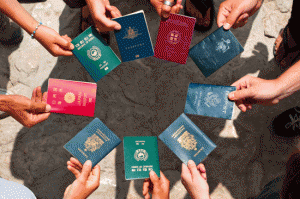
The report showed that while Australia is the most expensive country for overseas students, demand is likely to be boosted by the continuing falls in the Australian dollar and improved visa processing. HSBC calculated the average cost of university fees and living costs in Australia at more than US$38,000 per year.
The HSBC research reviewed data on higher education in 13 countries and territories around the world1. Australia’s average annual cost of US$38,000 was followed closely by the US, with total costs over US$35,000, and the UK, third with $30,000.
Graham Heunis, Head of Retail Banking and Wealth Management for HSBC in Australia, said the strength of the Australian economy and the Australian currency had kept the cost of studying in Australia high relative to other markets.
“While Australia has continued to enjoy higher economic growth than other western markets over the past five years, this has also led to a higher Australian dollar which has placed a strain on the price competitiveness of our export sectors, including education.”
The Australian education sector suffered a 12% drop in international enrolments between 2009 and 2012 but nevertheless has remained a popular destination for international students with a 2011 study showing 21% of Australia’s entire student population was from overseas, proportionately higher than Canada, UK, and the US (13%, 18% and 3 % respectively).
“While Australia’s education sector has taken a hit in terms of overseas student numbers, the proportion of international students in Australia remains strong, indicating many are looking past the cost impact to other factors such as quality of life and education and proximity to home. Having withstood the cost pressure of the high Australian dollar for the past three years, Australia’s tertiary institutions could see international student numbers swing back with the falling Australian dollar.”
HSBC forecast the Australian dollar against the US dollar to drop to $0.86 in Q4 2014 compared to a high of $1.09 in mid-20124 in its recent research report, ‘HSBC Currency Outlook’, published in July 2013.
“In addition, changes implemented by the Australian Government to streamline international student visa processing, introduced in 2012, should also help increase the influx of international students to Australia.”
“While Australian universities may have seen a dip in international enrollments in recent years, the falling Aussie dollar and simplified visa process should spark a resurgence in overseas students placing Australia on top of their destination lists.”
Table 1: Annual cost of studying abroad for international students in US$ per year
|
Country
|
Annual Fees
|
Annual Cost of living
|
Annual Total
|
|---|---|---|---|
| Australia |
$25,375
|
$13,140
|
$38,516
|
| United States |
$25,226
|
$10,479
|
$35,705
|
| United Kingdom |
$19,291
|
$11,034
|
$30,325
|
| United Arab Emirates |
$21,371
|
$6,004
|
$27,375
|
| Canada |
$18,474
|
$7,537
|
$26,011
|
| Singapore |
$14,885
|
$9,363
|
$24,248
|
| Hong Kong |
$13,182
|
$9,261
|
$22,443
|
| Japan |
$6,522
|
$12,642
|
$19,164
|
| Russia |
$3,131
|
$6,310
|
$9,441
|
| China |
$3,983
|
$4,783
|
$8,766
|
| Taiwan |
$3,270
|
$4,987
|
$8,257
|
| Spain |
$1,002
|
$6,004
|
$7,006
|
| Germany |
$635
|
$5,650
|
$6,285
|
1 The research was conducted in thirteen countries and territories around the world. Fees represent the average tuition cost for international students based on the top 10 largest institutions in each relevant country (sourced from individual institution data). Cost of living sourced from HESA Global Education Rankings 2010 where possible and adjusted to account for inflation and from Expatitsan.co.uk and HSBC Studying Abroad Research (Oct 2012) otherwise. Ivy League costs based on total average costs for attending a top ranked US University according to Forbes. Source: US Dollar conversion exchange rate as at 17th July 2013 – 1.51 USD to GBP.
2 Australian Education International, “International student enrolments data”, 2013
3 Institute of International Education, “Open Doors” project, 2011
4 HSBC Global Currency Outlook, July 2013 – the full report is available upon request . The report should be read in full including all disclosures and disclaimers. No consideration has been given to the particular investment objectives, financial situation or particular needs of any recipient and HSBC accepts no liability for damages arising out of any persons reliance upon the information contained in the report.









